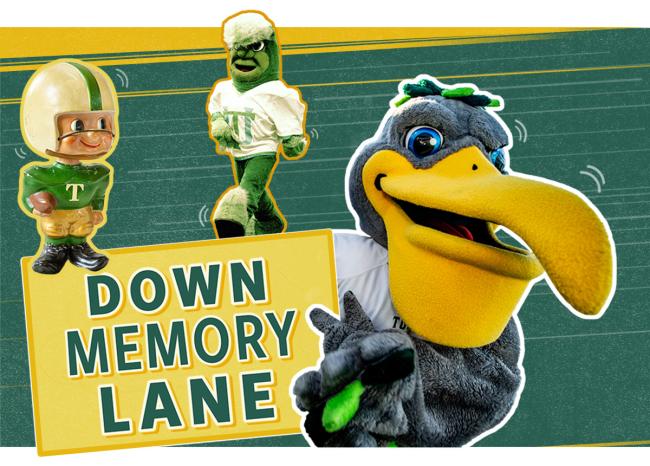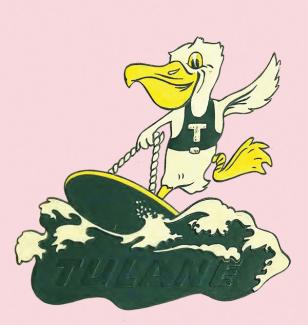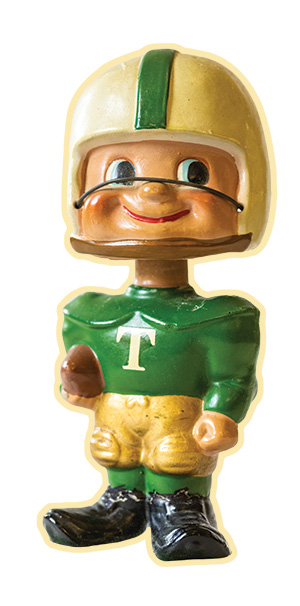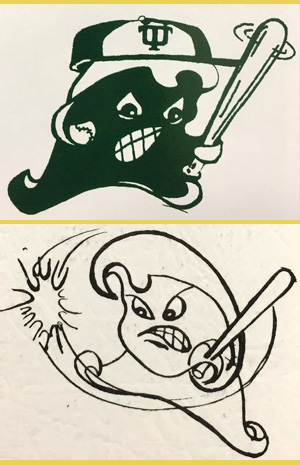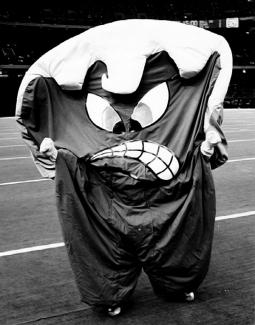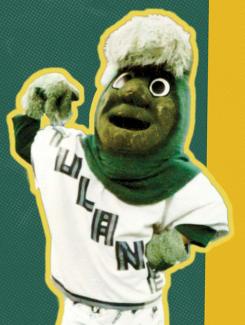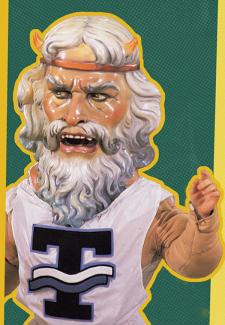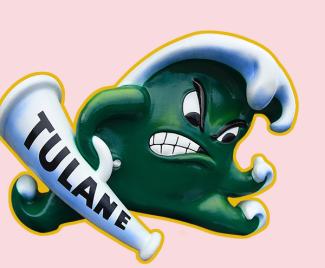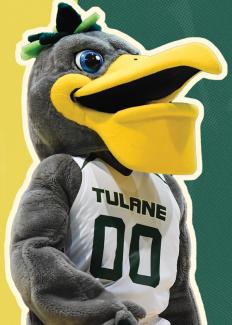The traditions. The tailgates. Marching bands and dance collectives. Screaming fans — from longtime ticket holders to first-time visitors. Classic games and heroics — from the season’s first flyover to the last whistle. It doesn’t get any better than watching the Olive Green and Sky Blue pursue greatness and championships each season.
With the pageantry that’s on full display every game day, two things are constant yet ever-changing, Green Wave mascots and logos. Tulane is home to some of the most memorable mascots and logos in college athletics history and owns one of the most unique brand elements and color palettes in the country. This distinctiveness attracts national media attention from top sports broadcasters and popular social media accounts.
Yes, the West Coast has a warring Trojan and a dancing tree. And, sure, we might think about a leprechaun or a gator when it comes to the Midwest or our neighbors in the Sunshine State. But it’s undeniable that Tulane is an absolute standout when it comes to mascots and logos firing up our fans and supporters, whether at Old Tulane Stadium, the Superdome, beloved Yulman Stadium, Avron B. Fogelman Arena in the Devlin Fieldhouse or at away games. So, let’s go down memory lane as we explore the fun history of Tulane Green Wave mascots and logos.


